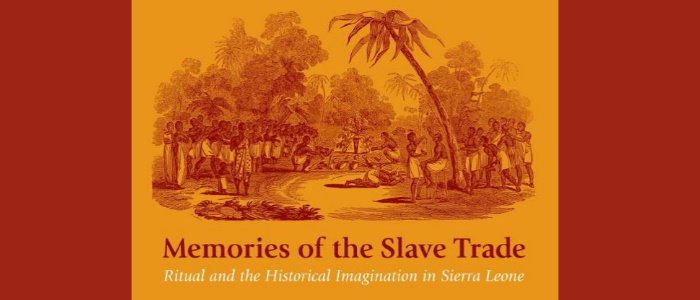Rosalind Shaw, Memories of the Slave Trade: Ritual and the Historical Imagination in Sierra Leone
This is not strictly a history book, but it is about history in really important ways. It is about not only how historical events shape our societies, but about how the ways that we remember those events shape our everyday lives in profound ways. In this case, the book is about how people in Sierra Leone, in West Africa, remember the slave trade and how subsequent experiences of colonialism, dictatorship, civil war and reconciliation interacted with those memories. Shaw examines this topic using the rituals and beliefs of Temne-speaking people as her sources.
One of the reasons I love this book is because Shaw demolishes the notion the West Africans do not remember or care deeply about the transatlantic slave trade. Slavery and the slave trade are discussed extensively in contemporary West Africa. This article ‘West African Antislavery Movements’ covers the numerous social movements in Benin, Mali, Mauritania and Niger which directly address slavery and its legacies in the region. There have been prominent apologies by West African governments for the slave trade. One public apology by the descendants of the Abass family is displayed in the Seriki Abass museum, Badagry, Nigeria. Where in the UK can you see an apology by a prominent British family for involvement in the slave trade or slavery?
The transatlantic slave trade had a profound impact on West African societies. In this book, Shaw uses a combination of historical sources from the archives, oral histories and traditions and ethnographic observation of everyday life, to follow one particular reverberation that rippled through the ritual lives of Temne communities. She shows how people changed their ritual and spiritual practices in the 18th century to cope with shockwaves that spread from slave-trading forts on the coast into remote communities.
These changes intersected with the sudden accumulation of new wealth by those African enslavers and associated traders who were profiteering from human trafficking. Individuals who became suddenly wealthy were the object of suspicion: had they benefited from the theft of the sons and daughters of these communities. Thus, the European commodities and currency brought by the slavers became tainted and associated with malevolent forces.
The abolition of the slave trade, while it slowly brought the forced transportation of people from Sierra Leone to an end, did not end slavery or economic exploitation. Plantations grew and developed in West Africa, frequently under the sway of the new British Crown Colony of Sierra Leone, established in 1807. The ritual imagination that communities had developed to cope with the slave trade was applied to these new forms of labour exploitation and wealth. When the colonial state rapidly, and violently, expanded in 1896-1898 in order to establish more intensive plantation systems, again ritual and spiritual practice were one of several tool-kits communities could use to understand, explain and weather the colonial storm.
Shaw brings her study up to the present-day and, in fact, is more concerned with the 21st century repercussions of the post-civil war society in Sierra Leone. The themes remain familiar; labour exploitation, violence, ill-gotten wealth. What Shaw’s work does is show how important history is to how people are participating in or trying to cope with these global currents. It is a book about a very particular place, and a place that might seem quite out-of-the-way and insignificant, but it takes that place, its history and its people’s beliefs very seriously, as we all should. Whether in Sierra Leone or Scotland, the way we remember our history changes the way we face our future.


